A grand monsoon walk
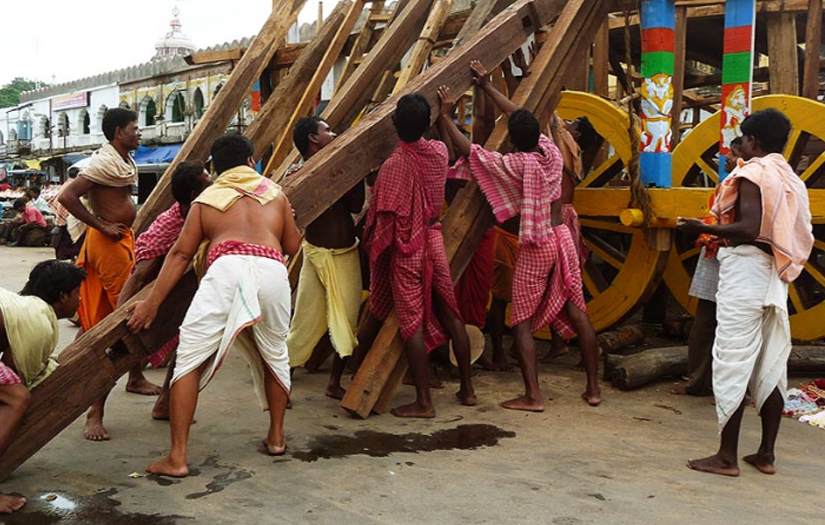
The onset of much awaited monsoons, bringing heavy, rumbling clouds in the dark skies above… and roaring crowds below, pull massive chariots for the gods who have decided to take a stroll…
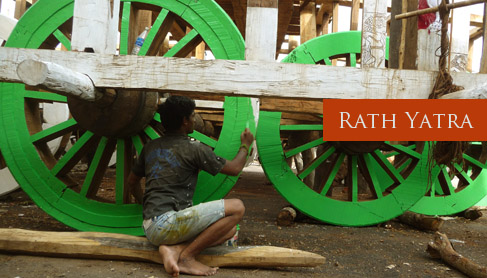
Every year, on the day of Asadha Shukla Dwitiya (second day of the waxing moon phase of the Asadha month according to the Hindu calendar), the biggest and the most elaborate festival of Lord Jagannath, a form of Krishna, is celebrated. On this day, the deities Lord Jagannath, Lord Balabhadra and Goddess Subhadra are taken out from the temple, on chariots in a ritual procession to the Gundicha temple, where they stay for seven days and are then brought back to the main temple, Shrimandira.
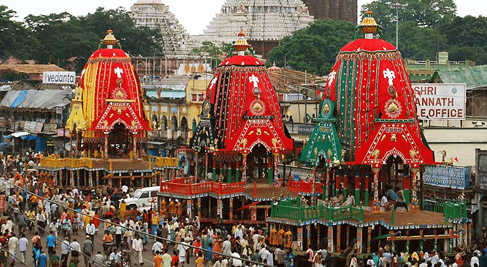
These huge, colourful chariots are drawn by hundreds of devotees, and watched by millions, who believe that seeing the gods in procession expiates them of all sins.
A legend in the Satapatha Brahmana says that a chariot was metamorphosed from Indra’s lightning weapon, Vajra, when he fought with a demon. Rath Yatra is also known as Gundicha Yatra, after Gundicha, the mythical queen of Indrayumna who founded the great shrine of the deities. The master craftsman of the heavens, Vishwakarma, carved the images out of logs and these images were brought in a procession to the main temple from Gundicha temple. Since then, the images make an annual visit to the Gundicha temple, where they were originally made and this festival is said to be that ancient.
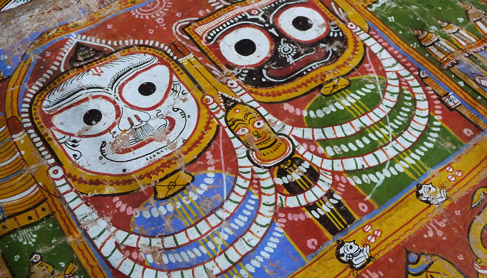
During the Anasar period, when the deities are believed to have become sick after their ritualistic summer bath, they rest for fifteen days, during which, Patachitra Paintings depicting the gods are worshipped, instead of their idols. At the end of this, in the month of Asadha, they go to visit their birthplace at Gundicha temple, in a big procession, which is the Rath Yatra of today.
When gods travel, the scale is massive and majestic and hence the monumental chariots surrounded by thronging devotees in a magnanimous procession. Whatever may be the legend, even to this day, each year, new chariots are built and lavishly decorated and the procession brought out in its full grandeur.
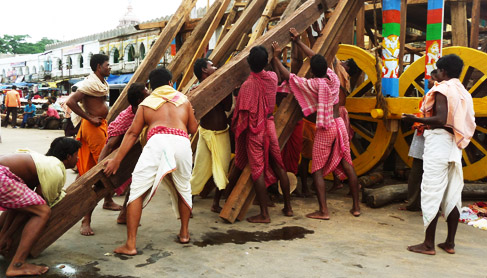
A vehicle that carries the divine gods ought to be grand in scale and adornment and is therefore a humungous task of great responsibility. Under the guidance of ten master craftsmen, around 60 craftsmen from surrounding villages assemble in this holy town of Puri, and work for two months, starting on the auspicious day of “Akshaya Tritiya”.
Tonnes of wood are sent from forests specially maintained for this purpose. Each chariot has its fixed set of specifications. The chariot of Lord Jagannath is known as “Nandighosa” and is 45 feet high, with wheels 7 feet in diameter. It is painted yellow, matching his clothes, for which he is known as “Pitambara”. Lord Balabhadra’s chariot, “Taladhwaja”, is 44 feet high and painted blue, and Subhadra’s chariot, “Deviratha”, is 43 feet high and is painted red.
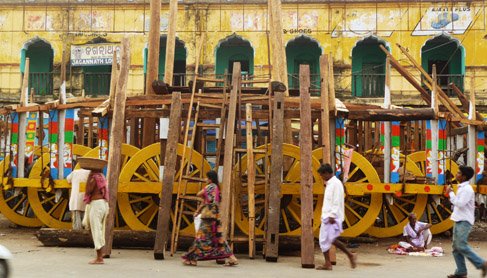
The chariots cover a generous area, spreading 40 feet by 40 feet, in a stepped square form. They are topped with temple shaped with colourful appliquéd cloth canopies, another beautiful craft that Orissa is famous for. Sixteen large wheels support and pull each gigantic structure.
Construction starts with the wheels, then moves on to the main platform and finally finishes with the top structure. The craftsmen use indigenous tools, specially fashioned for ease of grip and better control. Each and every single bit of the chariot is cut and put together by the sheer power of basic tools and perseverant hands, with basic yet strong wood joinery techniques.
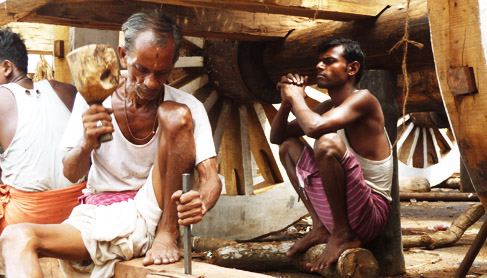
Remarkably, for such a massive piece of construction, no sketches are made and no rulers or scales are used. It is all in the master craftsman’s mind, which is brought to reality by his years of experience and skills, when he uses arms and feet to mark dimensions on the wood, which are amazingly given shape by the army of craftsmen.
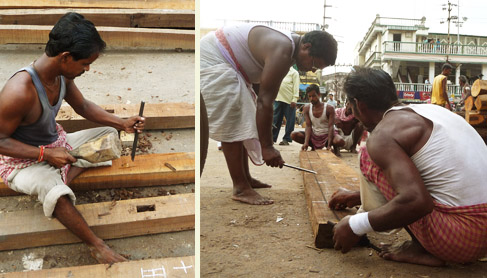
Without detailed architectural drawings or calibrated automatic machines, the skill of hands can make something so enormous, yet so perfect, that it is used to house the sacred idol, dearest to millions of worshippers. Trying to touch just the coarse jute rope that pulls the chariot, the devout crowds may not be able to see what is behind the heavily adorned canopies and flowers, but the grand splendour of the carriage assures them that their exalted lord is close to them, cleansing them of their sins.
~
Read in detail ~ Gaatha.org


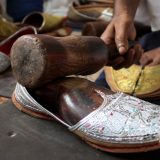







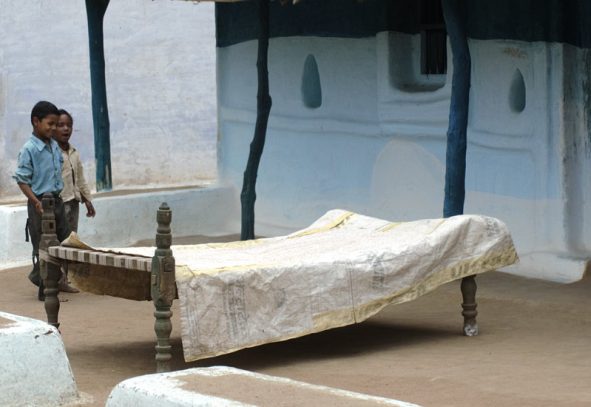
priyanka
Hi,
Well I appreciate the blog and really liked all the article. However I found this blog is incomplete (info on chariots and their names). I have provided a link, kindly have a look into the website.
Regards,
Priyanka